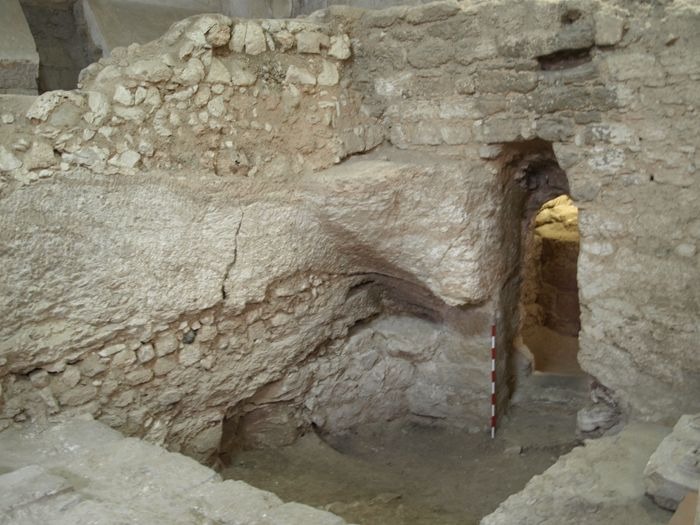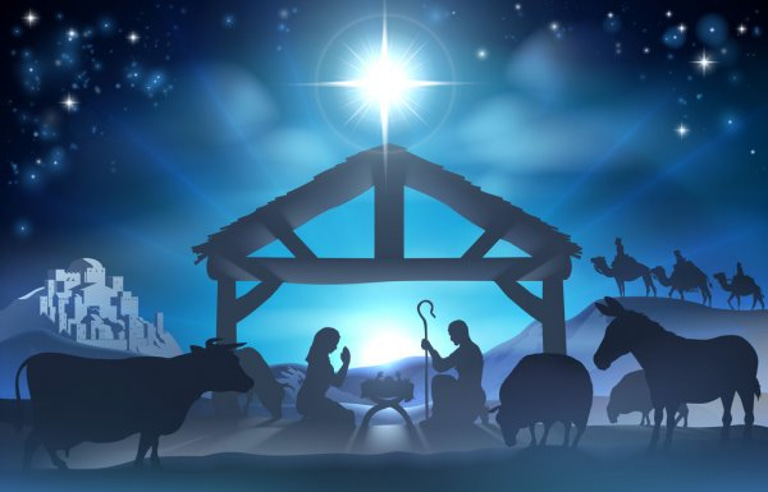Archaeological Discoveries Help Support The Nativity Story
Dive into the Nativity's history. Find out what archaeology tells us about the cultural background of Jesus' birth and its lasting impact.
Grace Callahan
11/23/20245 min read
FAQ: Archaeological Evidence of the Nativity
1. Is there archaeological evidence that supports the Nativity story in Bethlehem?
Yes, excavations in Bethlehem have uncovered structures, tools, and pottery from the Herodian period (37 BCE–4 CE), supporting the town’s existence and activity during Jesus’ time. A cave beneath the Church of the Nativity is traditionally venerated as Jesus’ birthplace, though definitive proof remains debated.
2. What is the historical significance of the Church of the Nativity?
The Church of the Nativity, built in the 4th century over a grotto believed to be Jesus’ birthplace, is a UNESCO World Heritage Site. Archaeological finds, including mosaics, coins, and inscriptions, affirm its early Christian importance and continuous veneration for nearly 2,000 years.
3. Can the Star of Bethlehem be explained through science or history?
While its exact nature is unknown, scholars suggest the Star of Bethlehem may have been a rare astronomical event, such as a planetary conjunction or comet. Historical records from Chinese astronomers and modern sky simulations provide plausible natural explanations.


Let’s take a deeper dive into the archaeological aspects of the Nativity to unravel the mysteries and explore what evidence—physical and historical—exists to support this cherished story.
Archaeological Evidence of the Nativity in Bethlehem
When you think of Bethlehem, what comes to mind? For many, it’s the peaceful image of Mary and Joseph finding shelter in a stable as Jesus is born. But was Bethlehem really a small, insignificant town, or did it have more to its story?
Archaeologists have uncovered evidence that Bethlehem was a thriving settlement during the Herodian period (roughly 37 BCE–4 CE). Excavations have revealed structures consistent with homes and public buildings, as well as tools and pottery that date back to the time of Jesus’ birth.
One of the most intriguing discoveries is a cave-like structure beneath the Church of the Nativity. Early Christian tradition suggests that this could be the very location of the stable described in the Gospels. While skeptics point out that no definitive evidence ties this cave directly to the Nativity, its historical significance is undeniable, as it has been venerated as a holy site for nearly two millennia.
Adding to the complexity, archaeological efforts in Bethlehem often face challenges due to political instability and the layered nature of the city, where centuries of history are built upon one another. Despite these obstacles, the discoveries paint a vivid picture of Bethlehem during a time when it was far more than just a quiet village—it was part of a bustling trade network, strategically located near major routes.
The Church of the Nativity: A Testament to History and Faith
The Church of the Nativity, a UNESCO World Heritage Site, stands as one of the most revered locations tied to the Nativity. Originally commissioned by Emperor Constantine in the 4th century CE, the church was later expanded by Emperor Justinian. It is said to be built directly over the grotto where Jesus was born.
Inside, the church is a treasure trove of early Christian art and architecture. Mosaic floors, hidden beneath centuries of renovations, depict intricate designs that date back to its earliest days. The grotto itself, marked by a silver star, is a place of pilgrimage for millions, reinforcing the site’s enduring spiritual significance.
Archaeological studies have also unearthed tombs, coins, and inscriptions that further tie the site to its historical roots. However, some of the most significant discoveries have been made in recent years, as modern preservation techniques allow researchers to delve deeper into its construction and history.
What Ancient Texts and Records Reveal
Archaeology often begins with stories—written accounts that guide researchers to physical evidence. In the case of the Nativity, the Gospels of Matthew and Luke provide the foundational narrative. These texts not only describe Jesus’ birth but also offer details about the historical context, such as the reign of King Herod and the Roman census that brought Mary and Joseph to Bethlehem.
Beyond the Bible, other ancient sources lend credibility to aspects of the Nativity story. For example, the Jewish historian Josephus provides a detailed account of Herod’s reign, including his paranoia and the political tensions of the era. While Josephus doesn’t mention the Nativity directly, his descriptions of Herod align with the biblical narrative, particularly the king’s role in the Massacre of the Innocents.
These ancient texts help archaeologists identify potential sites and artifacts that might corroborate the story. While they don’t always provide direct evidence, they establish a framework for understanding the historical and cultural landscape of Judea during the time of Jesus’ birth.
The Star of Bethlehem: A Celestial Mystery
The Star of Bethlehem has captured imaginations for centuries. Was it a miraculous event, a symbolic element of the Nativity story, or a real astronomical phenomenon?
Some scientists and historians suggest that the Star could have been a rare celestial event. Theories range from a conjunction of Jupiter and Saturn to a comet or supernova. For example, records from Chinese astronomers mention a bright star or "guest star" around 5–4 BCE, which could coincide with the Nativity timeline.
Astronomical software has even been used to recreate the night sky during the era, providing fascinating insights into what the wise men might have seen. While the exact nature of the Star remains a mystery, its inclusion in both scripture and historical records highlights its enduring significance in the Nativity story.
Life in Judea During the Nativity Era
To fully understand the Nativity, it’s essential to explore the daily life and culture of Judea during the first century. Bethlehem, like many towns in Judea, was influenced by Roman rule and Herodian governance.
Life in Bethlehem would have revolved around agriculture, with families relying on farming and herding for sustenance. The town’s proximity to trade routes brought merchants and travelers, creating a dynamic environment despite its small size.
Herod’s reign also left a lasting mark on the region. His ambitious building projects, including the expansion of the Second Temple in Jerusalem and the construction of fortress-palaces like Masada, reflect the wealth and tensions of the era. This context helps us better understand the challenges Mary and Joseph faced as they traveled to Bethlehem and sought shelter.
Modern Archaeology: Technology Meets Tradition
In recent decades, advances in technology have revolutionized archaeological studies of the Nativity. Ground-penetrating radar and 3D reconstructions allow researchers to explore ancient sites without causing damage.
One notable project involved scanning the area beneath the Church of the Nativity to map its subterranean structures. These studies revealed layers of history, from early Christian worship spaces to Roman-era foundations.
Radiocarbon dating has also been used to analyze artifacts, providing more precise timelines. While these technologies can’t confirm every detail of the Nativity story, they bring us closer to understanding its historical context and significance.
Debates and Controversies in Nativity Archaeology
As with any intersection of faith and science, the archaeology of the Nativity is not without controversy. Some scholars argue that the Nativity story is more theological than historical, while others see it as a blend of both.
Critics often point out the lack of direct evidence linking specific artifacts or sites to Jesus’ birth. However, believers counter that the spiritual truth of the story transcends the need for material proof.
These debates highlight the complexity of exploring religious history. They also remind us that archaeology is not about “proving” faith but about enriching our understanding of the past.
Conclusion: A Journey of Faith and Discovery
The Nativity story has resonated across centuries, inspiring faith, art, and inquiry. While archaeology may not answer every question, it offers valuable insights into the historical and cultural backdrop of this sacred event.
From the ancient streets of Bethlehem to the timeless symbolism of the Star of Bethlehem, each discovery adds depth to our understanding of the Nativity. Whether you approach this story from a place of faith or curiosity, its archaeological aspects invite us to explore the intersection of history, tradition, and mystery.
So why not dive deeper? Visit Bethlehem, explore the Church of the Nativity, or simply reflect on the timeless message of the Nativity. The journey is as enriching as the story itself.
